Current Work:
All Artwork © Stephen Althouse
Tools, Implements, Shrouds – selected work:
Museum and gallery catalogues published about this work:
Museum of Modern Art Kärnten – Biggs Museum of American Art
Boca Raton Museum of Art – Samek Art Museum
Gregg Museum of Art and Design – Pucker Gallery – Boston
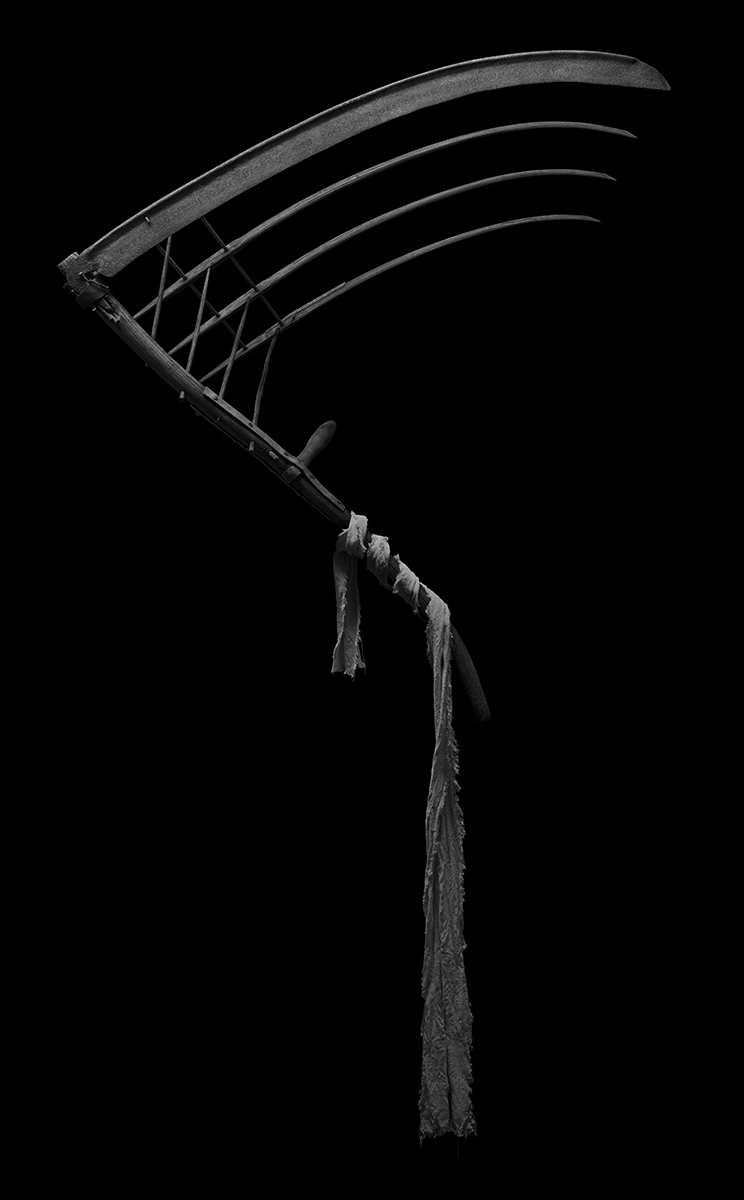
Scythe II
2024 archival pigment print 96 x 59.5 inches, 244 x 150 cm
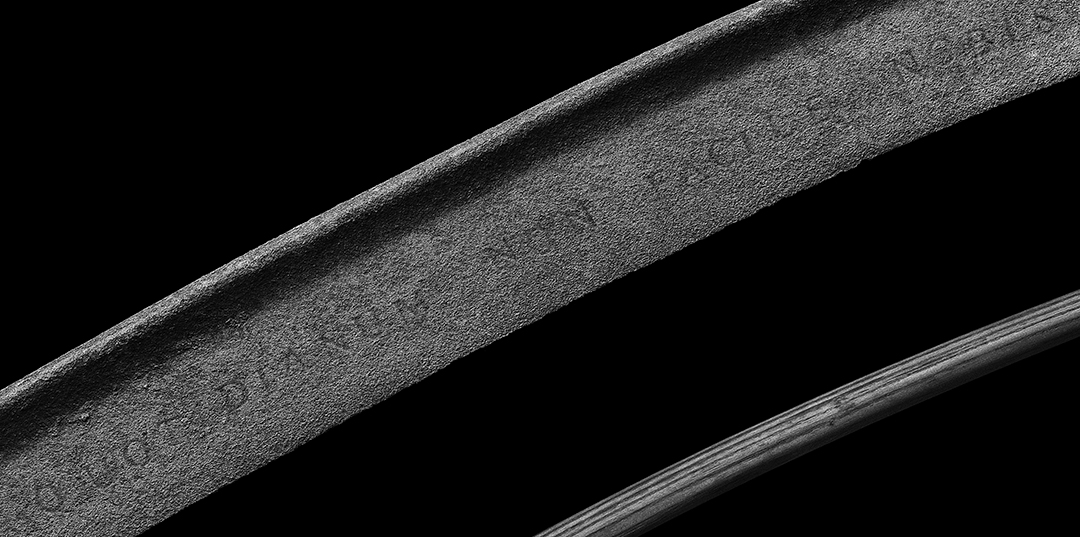
detail – Scythe II

Crutches and Tapestry
2024 archival pigment print 48 x 35.5 inches, 122 x 90 cm

Horse Bit and Lace with Dark Cloth
2024 archival pigment print 48 x 35.5 inches, 122 x 90 cm

detail – Horse Bit and Lace with Dark Cloth

iPhone
2024 archival pigment print 48 x 35.5 inches, 122 x 90 cm

Victis vitas et victorum animas capit
2022 archival pigment print 48 x 35.5 inches, 122 x 90 cm

detail – Victis vitas et victorum animas capit

Virgin of Guadalupe
2022 archival pigment print 48 x 35.5 inches, 122 x 90 cm

detail – Virgin of Guadalupe

Sacred Grips
2022 archival pigment print 48 x 35.5 inches, 122 x 90 cm

Broken Shovel
2021 archival pigment print 88 x 59.5 inches, 220 x 150 cm

Full Metal Jacket
2021 archival pigment print 48 x 35.5 inches, 122 x 90 cm

detail – Full Metal Jacket

Rawhide
2021 archival pigment print 59.5 x 59.5 inches, 151 x 151 cm
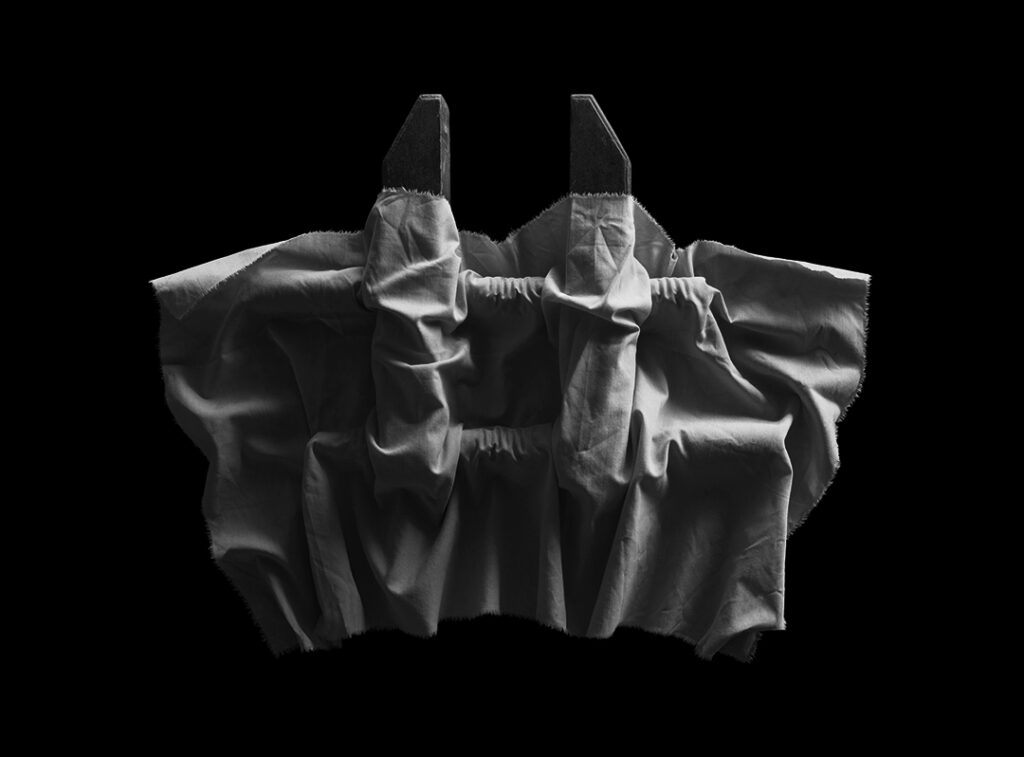
Shrouded Clamp
2020 archival pigment print 35.5 x 48 inches, 90 x 122 cm
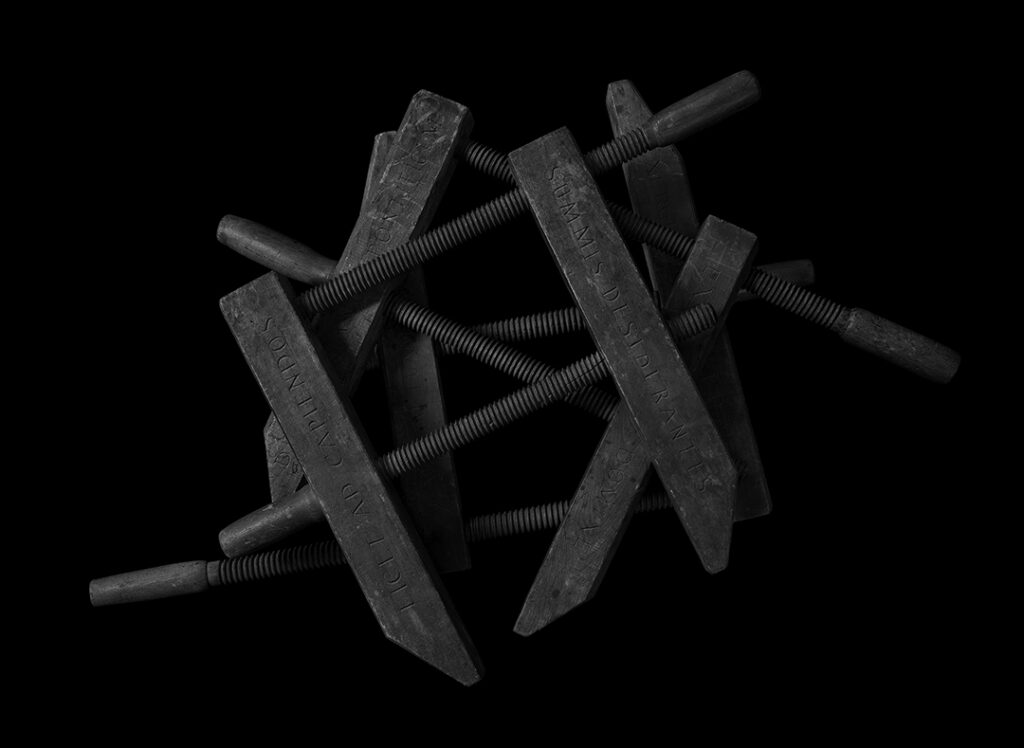
Clamps II
2020 archival pigment print 35.5 x 48 inches, 90 x 122 cm

detail – Clamps II

Collar with Braille
2020 archival pigment print 48 x35.5 inches, 122 x 90 cm

detail – Collar with Braille

detail – Collar with Braille

Great Helm with Braille
2020 archival pigment print 59.5 x 43.5 inches, 151 x 110.5 cm
Czong Institute for Contemporary Art (CICA Museum), Gimpo-si, South Korea
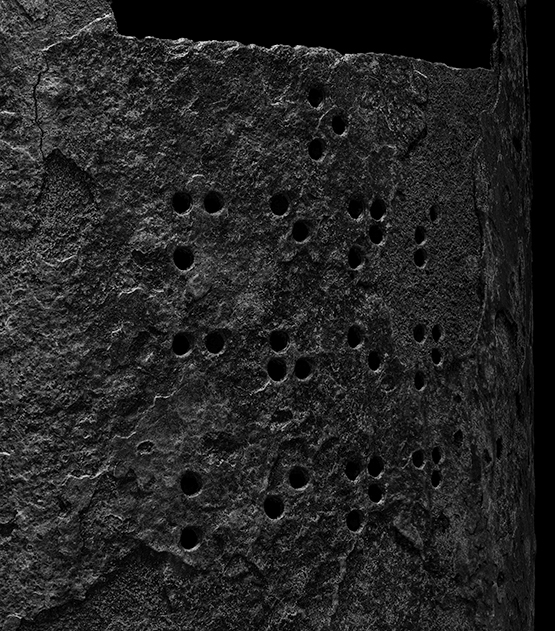
detail – Great Helm with Braille

detail – Great Helm with Braille

Inlay III
2020 archival pigment print 59.5 x 88 inches, 150 x 220 cm

detail – Inlay III

The Dark Sash
2020 archival pigment print 48 x35.5 inches, 122 x 90 cm

detail – The Dark Sash

Line with Hooks
2019 archival pigment print 48 x 35.5 inches, 122 x 90 cm

detail – Line with Hooks

Inlay II (Saving Pangaea)
2019 archival pigment print 48 x 35.5 inches, 122 x 90 cm

detail – Inlay II (Saving Pangaea)

The Five Talents II
2019 archival pigment print 59.5 x 88 inches, 150 x 220 cm

detail – The Five Talents II
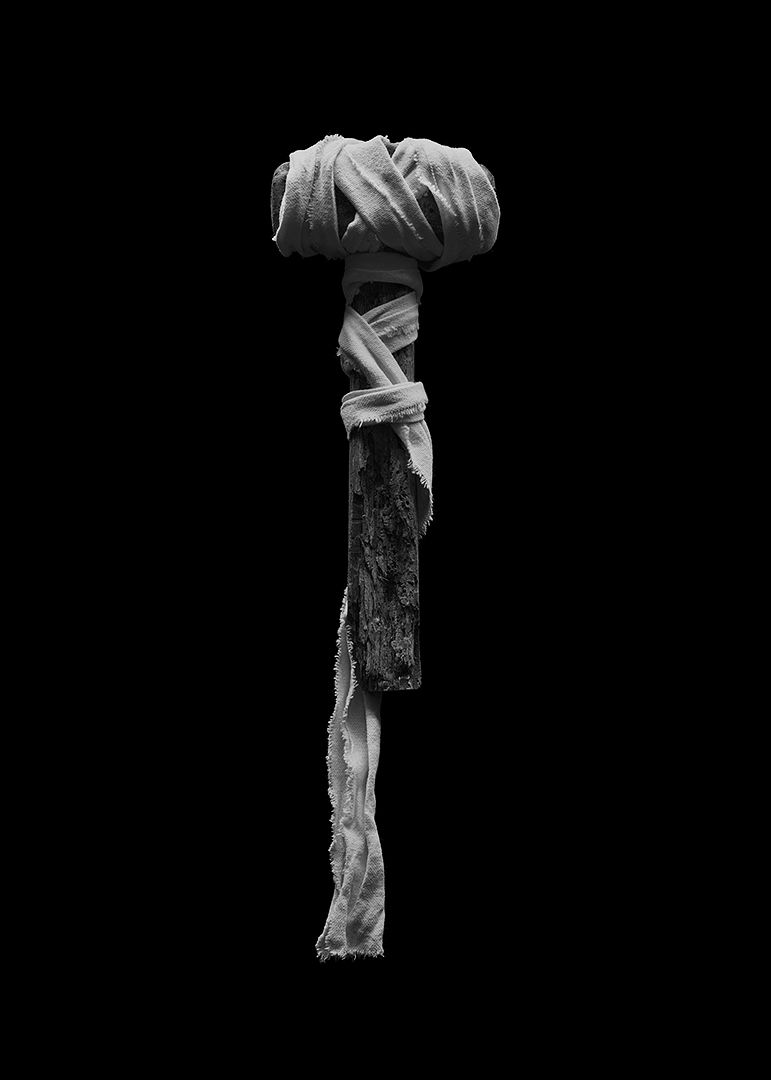
Bound Hammer
2017 archival pigment print 48 x 35.5 inches, 122 x 90 cm

Broken Wagon
2017 archival pigment print 59.9 x 96 inches, 150 x 244 cm
Museum Moderner Kunst Kärnten, Klagenfurt, Austria

detail – Broken Wagon

Door with Flames
2017 archival pigment print 88 x 59.5 inches, 220 x 150 cm
Kunsthalle Mannheim, Germany
Museum of Art-DeLand, Florida
Museum Moderner Kunst Kärnten, Klagenfurt, Austria
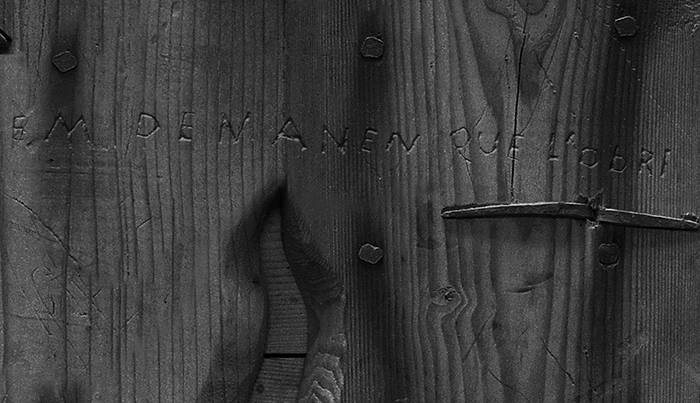
detail – Door with Flames

Door with Hole
2017 archival pigment print 88 x 59.5 inches, 220 x 150 cm
Museum Moderner Kunst Kärnten, Klagenfurt, Austria

detail – Door with Hole

Inca Wool and Clamp
2017 archival pigment print 88 x 59.5 inches, 220 x 150 cm

Medal with Braille
2017 archival pigment print 48 x 35.5 inches, 122 x 90 cm
Museum Moderner Kunst Kärnten, Klagenfurt, Austria

detail – Medal with Braille
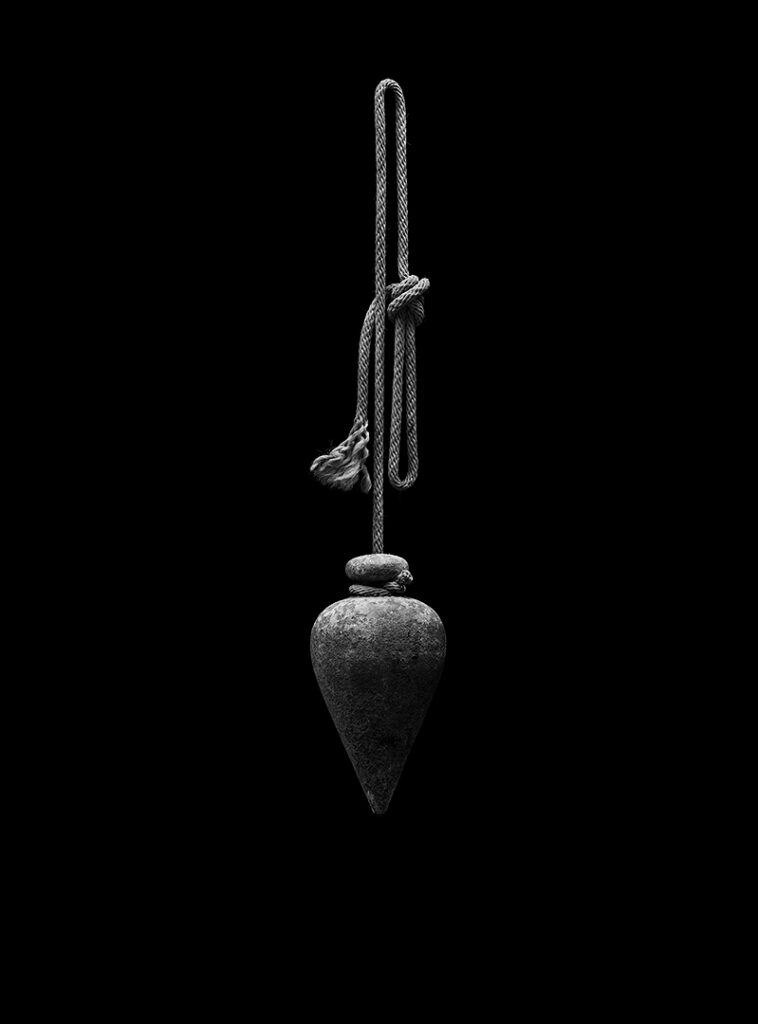
Plumb Line
2017 archival pigment print 48 x 35.5 inches, 122 x 90 cm
Museum Moderner Kunst Kärnten, Klagenfurt, Austria

Shovel with Braille
2017 archival pigment print 96 x 59.5 inches, 244 x 150 cm
Ludwig Museum, Koblenz, Germany
Orlando Museum of Art, Orlando, Florida
Museum Moderner Kunst Kärnten, Klagenfurt, Austria

detail – Shovel with Braille

Chairs Diptych
2015 diptych full size 96 x 120 inches, 244 x 305 cm
each archival pigment print 96 x 59.5 inches, 244 x 150 cm
Museum Moderner Kunst Kärnten, Klagenfurt, Austria

detail -Chairs Diptych

Rusted Nails
2015 archival pigment print 35.5 x 48 inches, 90 x 122 cm

detail – Rusted Nails

Axe with Braille
2013 archival pigment print 48 x 35.5 inches, 122 x 90 cm
Biggs Museum of American Art, Dover, Delaware
Gregg Museum of Art and Design, Raleigh, North Carolina
Museum Moderner Kunst Kärnten, Klagenfurt, Austria

Broken bow
2013 archival pigment print 59.5 x 88 inches, 150 x 220 cm
Museum Moderner Kunst Kärnten, Klagenfurt, Austria

Rusted Maille (remade from 2011 piece)
2013 archival pigment print 35.5 x 48 inches, 90 x 122 cm

Clamp and Shroud I
2013 archival pigment print 48 x 35.5 inches, 122 x 90 cm
Museum Moderner Kunst Kärnten, Klagenfurt, Austria

Ladder
2013 archival pigment print 59.5 x 114 inches, 150 x 290 cm
Museum Moderner Kunst Kärnten, Klagenfurt, Austria
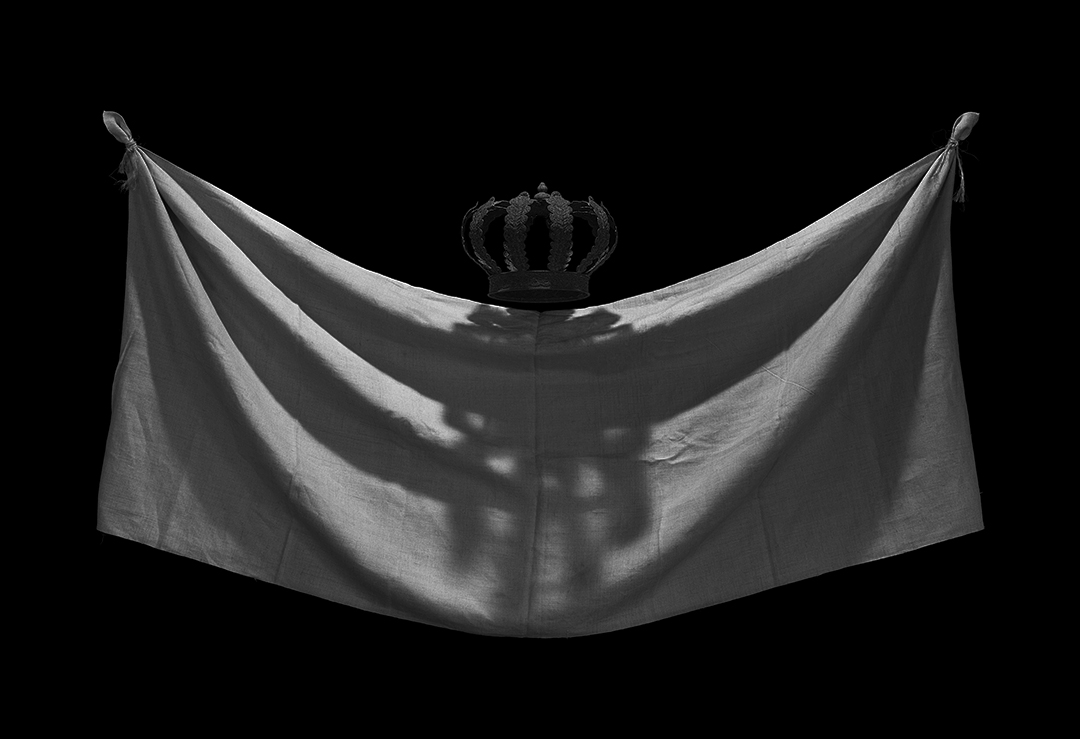
Rusted Crown
2013 archival pigment print 59.5 x 88 inches, 150 x 220 cm
Mobile Museum of Art, Mobile, Alabama

Walnut
2013 archival pigment print 48 x 35.5 inches, 122 x 90 cm

Forks with Braille
2011 archival pigment print 42 x 62 inches, 107 x 157 cm
Museum Moderner Kunst Kärnten, Klagenfurt, Austria

Iron Wedge
2011 archival pigment print 35.5 x 48 inches, 90 x 122 cm

Knot III (horse armor)
2011 archival pigment print 88 x 59.5 inches, 220 x 150 cm
Orlando Museum of Art, Orlando, Florida
Samek Art Museum, Bucknell University, Lewisburg, Pennsylvania

detail – Knot III (horse armor)

Shoe II
2011 archival pigment print 59.5 x 59.5 inches, 151 x 151 cm

Bull Blinders
2009 archival pigment print 62 x 42 inches, 157 x 107 cm
Butler Institute of American Art, Youngstown, Ohio

Scythe I
2009 archival pigment print 42 x 62 inches, 107 x 157 cm
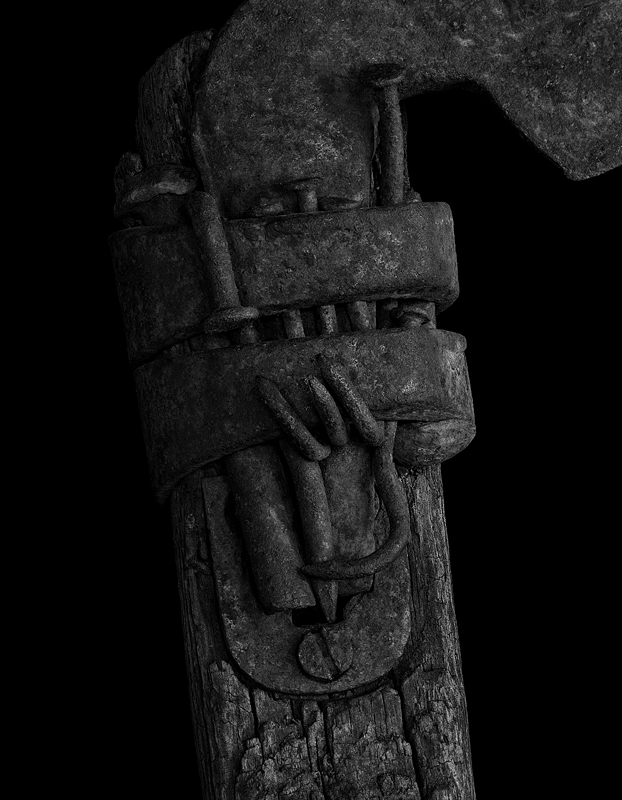
detail – Scythe I

Book
2009 archival pigment print 59.5 x 59.5 inches, 151 x 151 cm
Written narrative about this piece
Book
“…By using Braille in my artwork I may be expressing my feelings that humankind is basically blind…. it seems that the human experience throughout our dark history has been one of blindly groping and stumbling through life…”
Stephen Althouse, June 18, 2005, excerpt from a gallery talk at his exhibition at the 7th International Fototage, Mannheim, Germany

detail – Book

Saw II
2009 archival pigment print 59.5 x 114 inches, 150 x 290 cm
Written narrative about this piece
Excerpts from a 2009 letter responding to questions from a Collection Research Fellow at the Museum of Contemporary Photography, Chicago, Illinois
Saw II
Saw II was inspired by a friendship between Althouse and Elam Beiler, a local Amish Bishop.
“….Each time we crossed paths our conversations became a bit deeper and more philosophical. He [Elam] was carrying a lot of weight on his shoulders, especially the relentless pressures upon his people for change, and he was interested in my opinions…..Elam rarely socialized at his home, so it was special when he had my family over for an evening visit. The following day in the snowy woods behind his farm he was fatally injured while felling a tree for firewood… I’ve been mourning his passing for a long time….”
“….As is Amish custom, Elam’s viewing was in his house. His long body was wrapped in a white shroud and was lying on a simple long thin wooden bench. I’ll never forget seeing him there for the last time, and that mental image was inspiration for Saw II….”

Weaning Halters
2009 archival pigment print 59.5 x 59.5 inches, 151x 151cm
Written narrative about this piece
Excerpts from a 2009 letter responding to questions from a Collection Research Fellow at the Museum of Contemporary Photography, Chicago, Illinois
Weaning Halters
In Weaning Halters Althouse integrates phrases borrowed from special songs that were read at Elam’s funeral from the Ausbund, a 16th century hymnal used solely by the Amish and still printed in old German Fraktur script.
“…phrases stamped into the hanging metal tags describe how each of us may react differently when approaching death, just as calves react differently when being weaned from their mothers…”
Weaning Halters, Saw II, and Wheel I were inspired by a friendship between Althouse and Elam Beiler, an Amish Bishop who was the Amish leader in their area. Amish Bishops try to maintain and regulate the religious and cultural traditions within their church districts while simultaneously not loosing their people to the temptations of mainstream society. It appears that Elam Beiler faced many challenges, and was beginning confide in the artist:
“….Each time we crossed paths our conversations became deeper and more philosophical. He [Elam] was carrying a lot of weight on his shoulders, especially the relentless pressures on his people for change, and he was interested in my opinions…..Elam rarely socialized at his home, so it was special when he had my family over for an evening visit. The following day in the snowy woods behind his farm he was fatally injured while felling a tree for fire wood…… I’ve been mourning his passing for a long time…”
A note about the actual usage of weaning halters on a farm:
As calves mature, some easily transition from nursing their mothers’ milk to eating grass and hay. However some calves have difficulty with this process and will refuse to stop nursing even well past the age when they should be leaving their mothers and eating on their own. Farmers, who want the cows’ milk for their families’ use or to sell, may put weaning halters on the calves to facilitate the weaning process. Weaning halters have metal nails added to the noseband, so when a calf tries to nurse, the nails will jab and annoy the mother, who will then no longer permit the calf to nurse.

detail – Weaning Halters
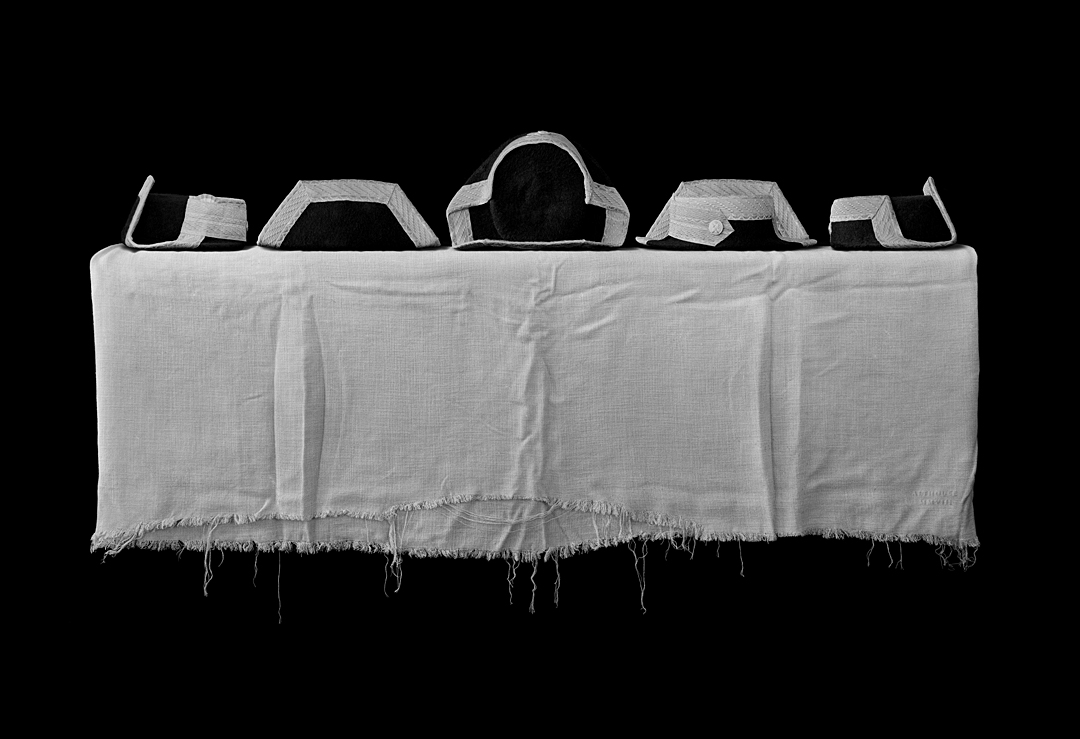
Mesa con Tricornios
2008 archival pigment print 42 x 62 inches, 107 x 157 cm
Written narrative about this piece
Mesa con Tricornios 2008 is a reference to Althouse’s living and working in Spain in the early 1970’s during Franco’s fascist dictatorship. Depicted in this photograph are formal dress ‘tricornios’ which are a unique style of hat worn by the Guardia Civil; the Spanish military police which was used by Franco to strictly enforce his laws and maintain order.
“…As an American I found it curious that men and women could walk alone in the streets at any hour of the day or night in any part of the city [Madrid] without fear of crime….closed shops could even leave their outdoor displays on the sidewalks over night just covered with tarps…..Never once did I see or hear of problems such as alcohol, drugs, or weapons…
…However with time as I was feeling more like a resident than a visitor, I became aware that the peace and tranquility had some unsettling strings attached. Although I had always been aware of the Guardia Civil posted every block or two, armed and wearing their unusual black tricornio hats, their presence gradually felt more prominent and oppressive to me. My friends would get inhibited and quiet when we strolled passed them, and I began to sense their influence everywhere, even in private…when I asked questions about the Guardia Civil, replies were nervous abrupt school-book answers of how they protect us, and then the subject would be quickly changed… There seemed to be security only for people who conformed to Franco’s rules and who never expressed dissatisfaction with the system. It became apparent that the Guardia Civil dealt forcefully and harshly with those who did not… The longer I lived in Spain, the more effective the tricornio became as a tool to make me feel uneasy and intimidated…”
Edited excerpts from a gallery talk by the artist during the 2009 exhibition Stephen Althouse: De l’Entaille de l’Épée au Sillon de la Charrue at the Beaux-arts des Amériques, Montréal, Canada

Pick with Braille II
2008 archival pigment print 48 x 35.5 inches, 122 x 90 cm
Museum Moderner Kunst Kärnten, Klagenfurt, Austria

Sleeve Ribbon
2008 archival pigment print 48 x 35.5 inches, 122 x 90 cm
Museum Moderner Kunst Kärnten, Klagenfurt, Austria

Wheel I
2008 archival pigment print 59.5 x 88 inches, 151 x 223 cm
Museum Moderner Kunst Kärnten, Klagenfurt, Austria
Written narrative about this piece
Wheel I, 2009
Stephen Althouse, 2009, excerpts from a letter responding to a Museum Collection Researcher at the Museum of Contemporary Photography, Chicago, Illinois
Weaning Halters, Saw II, and Wheel I were inspired by a friendship between Althouse and Elam Beiler, an Amish Bishop who was the Amish leader in their area. Amish Bishops try to maintain and regulate the religious and cultural traditions within their church districts while simultaneously not loosing their people to the temptations of mainstream society. It appears that Elam Beiler faced many challenges, and was beginning confide in the artist:
“….Each time we crossed paths our conversations became deeper and more philosophical. He [Elam] was carrying a lot of weight on his shoulders, especially the relentless pressures on his people for change, and he was interested in my opinions…..Elam rarely socialized at his home, so it was special when he had my family over for an evening visit. The following day in the snowy woods behind his farm he was fatally injured while felling a tree for fire wood…… I’ve been mourning his passing for a long time…”
In Wheel I Althouse integrates phrases borrowed from special songs that were read at Elam Beiler’s funeral from the Ausbund, a 16th century hymnal used solely by the Amish and still printed in old German Fraktur script:
“…The carved phrases in Wheel I question which way to turn, and describe the woods as being barren of leaves…”

detail – Wheel I

Mallet with Braille
2006 archival pigment print 42 x 31 inches, 107 x 79 cm

detail – Mallet with Braille

Pick with Braille I
2006 archival pigment print 42 x 31 inches, 107 x 79 cm

Rake II
2006 archival pigment print 42 x 62 inches, 107 x 157 cm

Shoe I
2006 archival pigment print 48 x 35.5 inches, 122 x 90 cm

Broken Cello
2005 archival pigment print 59.5 x 88 inches, 151 x 223 cm

detail – Broken Cello

Closed Tongs
2004 archival pigment print 59.5 x 88 inches, 151 x 223 cm
Art Museum, Miami University, Oxford, Ohio
Musée d’Art moderne et d’Art contemporain, Liège, Belgium
Written narrative about this piece
Closed Tongs, Jupille sur Meuse, Belgium, 2004
Sacred Tongs, Jupille sur Meuse, Belgium, 2004
He was working hard down in the pit in the freezing metal shop. It was a cold winter in Belgium but his face and bare arms were dripping with sooty sweat as he used his tongs to handle the white hot metal. As I watched from above and conversed with him, I began reminiscing my younger years when my late grandfather and I labored hard together at a stone quarry in Pennsylvania. It opened a floodgate of memories and emotions. He looked up out of the foundry pit and saw me staring down at his tools. He carefully presented his tongs up to me in a gesture of a sacred offering.

Iron Roses
2004 archival pigment print 42 x 31 inches, 107 x 79 cm
Musée d’Art moderne et d’Art contemporain, Liège, Belgium

detail – Iron Roses

Sacred Tongs
2004 archival pigment print 48 x 35.5 inches, 122 x 90 cm
Art Museum, Miami University, Oxford, Ohio
Musée d’Art moderne et d’Art contemporain, Liège, Belgium
Written narrative about this piece
Closed Tongs, Jupille sur Meuse, Belgium, 2004
Sacred Tongs, Jupille sur Meuse, Belgium, 2004
He was working hard down in the pit in the freezing metal shop. It was a cold winter in Belgium but his face and bare arms were dripping with sooty sweat as he used his tongs to handle the white hot metal. As I watched from above and conversed with him, I began reminiscing my younger years when my late grandfather and I labored hard together at a stone quarry in Pennsylvania. It opened a floodgate of memories and emotions. He looked up out of the foundry pit and saw me staring down at his tools. He carefully presented his tongs up to me in a gesture of a sacred offering.

Adjustable Wrench
2003 archival pigment print 42 x 62 inches, 107 x 157 cm

detail – Adjustable Wrench

Autumn Plant
2003 archival pigment print 42 x 31 inches, 107 x 79 cm
Musée d’Art moderne et d’Art contemporain, Liège, Belgium

detail – Autumn Plant

Axe and Tapestry
2003 archival pigment print 42 x 31 inches, 107 x 79 cm
Art Museum, Miami University, Oxford, Ohio
Musée d’Art moderne et d’Art contemporain, Liège, Belgium

detail – Axe and Tapestry

Axe, Wood, and Shroud
2003 archival pigment print 59.5 x 88 inches, 151 x 223 cm
Museum of Contemporary Photography, Chicago, Illinois
Musée d’Art moderne et d’Art contemporain, Liège, Belgium
Statement about this piece, Samek Art Museum
Axe, Wood, and Shroud
Artist: Stephen Althouse
Althouse, who lives in Rebersburg, Pennsylvania in Amish country, produced a series of visual meditations on traditional hand tools. In Axe, Wood, and Shroud the function of the tool is aestheticized. The axe and wood bracket the implied act of chopping wood. The soft vernal light raking over thick creased fabric depicts the act as a sacrament symbolized by relics as in a Medieval altar painting while the minimal composition, flat frontal perspective and colorless negative space bring the act into the space of Modern art.
Richard Rinehart, Director
Samek Art Museum
Lewisburg, Pennsylvania

Belgian Ribbon
2003 archival pigment print 42 x 31 inches, 107 x 79 cm
Musée d’Art moderne et d’Art contemporain, Liège, Belgium

Belgian Shears
2003 archival pigment print 42 x 31 inches, 107 x 79 cm
Musée d’Art moderne et d’Art contemporain, Liège, Belgium

Brick and Ivy
2003 archival pigment print 42 x 62 inches, 107 x 157 cm
Musée d’Art moderne et d’Art contemporain, Liège, Belgium

detail – Brick and Ivy

Bridle
2003 archival pigment print 42 x 31 inches, 107 x 79 cm
Musée d’Art moderne et d’Art contemporain, Liège, Belgium

detail – Bridle

Bridle with Blinders
2003 archival pigment print 48 x 35.5 inches, 122 x 90 cm
Musée d’Art moderne et d’Art contemporain, Liège, Belgium

Clamps
2003 archival pigment print 59.5 x 88 inches, 151 x 223 cm
Musée d’Art moderne et d’Art contemporain, Liège, Belgium
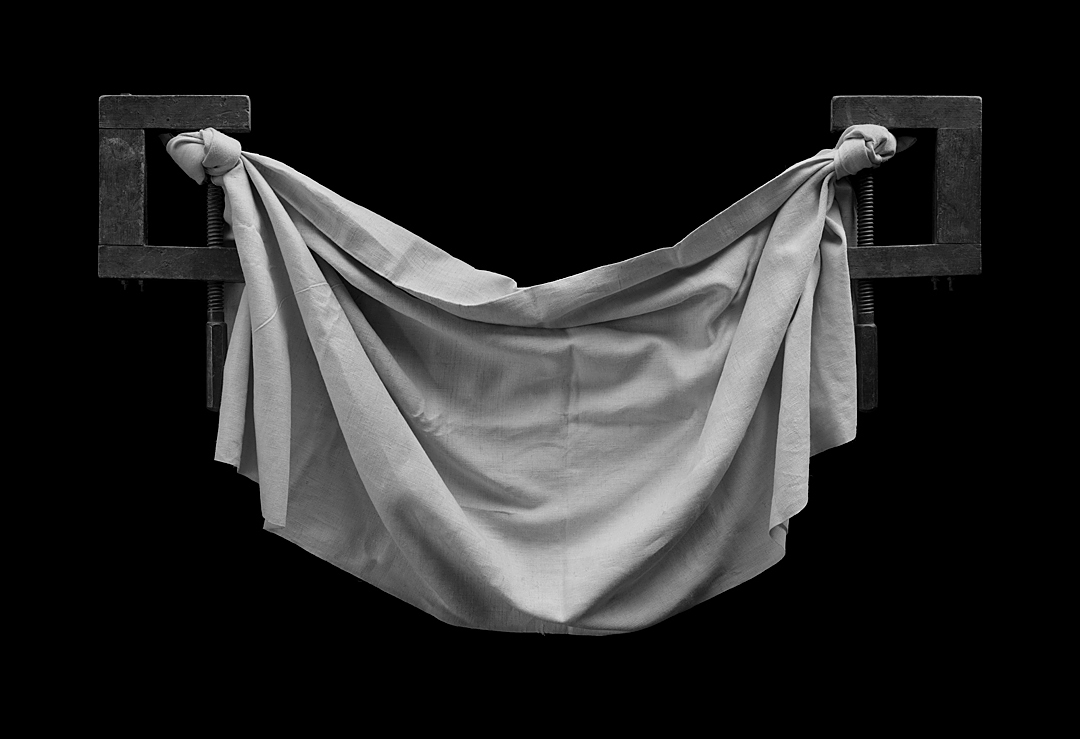
Clamps and Shroud
2003 archival pigment print 59.5 x 88 inches, 151 x 223 cm
Art Museum, Miami University, Oxford, Ohio
Museum Moderner Kunst Kärnten, Klagenfurt, Austria
Musée d’Art moderne et d’Art contemporain, Liège, Belgium
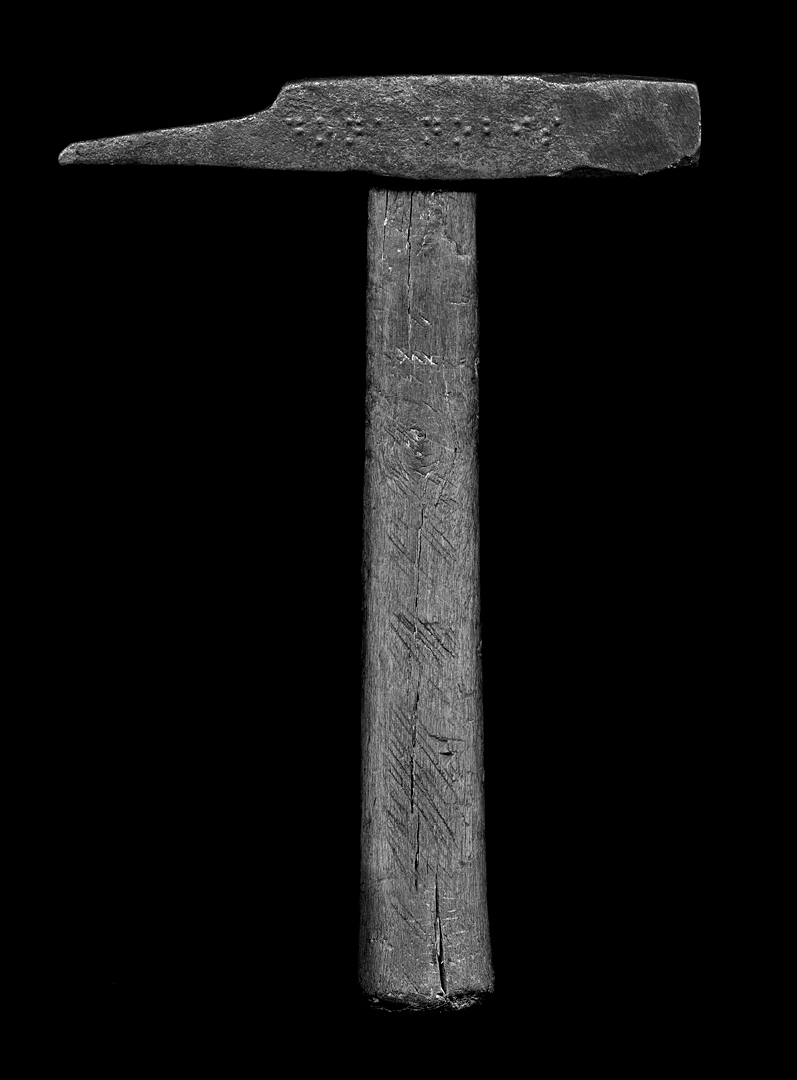
Hammer with Braille
2003 archival pigment print 42 x 31 inches, 107 x 79 cm
Art Museum, Indiana University, Bloomington, Indiana
Musée d’Art moderne et d’Art contemporain, Liège, Belgium

Inlay
2003 archival pigment print 42 x 31 inches, 107 x 79 cm
Musée d’Art moderne et d’Art contemporain, Liège, Belgium

Massacre Ardennais
2003 archival pigment print 42 x 31 inches, 107 x 79 cm
Musée d’Art moderne et d’Art contemporain, Liège, Belgium
Written narrative about this piece
Massacre Ardennais
Excerpts from a letter responding to a viewer’s question from the exhibition Stephen Althouse, Art Museum of Miami University, Oxford, Ohio, February 15 – March 28, 2006
“…in slang Belgian-French the word ‘massacre’ simply means ‘trophy antlers’, so the title of the photograph Massacre Ardennais translates as Trophy antlers from the Ardennes; however the words also imply something larger and darker when translated more formally….
….many things were going through my mind while I was formulating ideas for this piece. While living in Belgium I had been visiting the Ardennes Mountains near the German border and noticed antlers hanging as ornamentation on the sides of country houses. I began to recall happy memories of my late grandparents’ summer cottage in the forested mountains of northern Pennsylvania, which had a similar look, feel, and tranquility of the Ardennes. The name of their cottage, the Antlers, was hung over the front door along with a rack of deer antlers.
Intertwined with these pleasant thoughts was the unsettling realization that some of the fiercest fighting in WWII had taken place where I was now walking in the quiet snow blanketed forest, with terrible loss of lives for both Americans and Germans during their great struggle….Knowing how I grapple with humanity’s predisposition for making war, you can imagine how I felt and why I was compelled to create something……..The Braille on the cloth asks quis custodiet ipsos custodies? which is Latin for who shall guard the guardians?…”
Stephen Althouse, March, 2006

detail – Massacre Ardennais

Nail and String
2003 archival pigment print 42 x 31 inches, 107 x 79 cm
Musée d’Art moderne et d’Art contemporain, Liège, Belgium

detail – Nail and String

Rake I
2003 archival pigment print 48 x 35.5 inches, 122 x 90 cm
Museum of Contemporary Photography, Chicago, Illinois
Allentown Art Museum of the Lehigh Valley, Pennsylvania
Museum Moderner Kunst Kärnten, Klagenfurt, Austria
Musée d’Art moderne et d’Art contemporain, Liège, Belgium

Reins and Bit
2003 archival pigment print 31 x 42 inches, 79 x 107 cm
Musée d’Art moderne et d’Art contemporain, Liège, Belgium

Royal Spindle
2003 archival pigment print 48 x 35.5 inches, 122 x 90 cm
Museum of Art – DeLand, Florida
Musée d’Art moderne et d’Art contemporain, Liège, Belgium

detail – Royal Spindle

Saw I
2003 archival pigment print 42 x 31 inches, 107 x 79 cm
Musée d’Art moderne et d’Art contemporain, Liège, Belgium

Washboard
2003 archival pigment print 42 x 31 inches, 107 x 79 cm
Musée d’Art moderne et d’Art contemporain, Liège, Belgium

detail – Washboard